Welcome to a unique exploration of the animal kingdom. Today, we’re focusing on a rather unusual aspect of our diverse biosphere – animals whose names start with the letter ‘X’.
The letter ‘X’ is not a common starting point for English words, let alone animal names. However, our planet’s vast biodiversity does not disappoint, and we’ve found a surprising array of creatures that fit this criterion.
And because we love a good challenge, we’re not stopping at common names. We’ve got some surprises on our list.
So, buckle up, and let’s dive into the X-traordinary, X-otic, and X-citing world of animals that start with ‘X’. Prepare to be X-hilarated!
Animals with Common Names Starting with ‘X’
As we embark on our alphabetical adventure, we start with animals that have common names beginning with ‘X’. While ‘X’ might be one of the least common starting letters for animal names, it doesn’t mean we’re short on fascinating creatures. Our journey begins with two unique animals that not only stand out for their ‘X’ names but also for their intriguing characteristics and important roles in their respective ecosystems.
X-ray Tetra
In the freshwater tributaries of the Amazon River, a fascinating and diminutive creature resides—the X-ray Tetra. This captivating species of fish has carved a niche for itself in a diverse array of habitats, ranging from serene, slow-moving streams to the vast expanses of floodplain lakes. Acting as a vital link in the aquatic food chain, these small fish serve as nourishment for larger aquatic creatures, thereby contributing significantly to the biodiversity of their entire ecosystem.
One of the most astonishing features of the X-ray Tetra is its near-transparent body, bestowing upon it an ethereal ‘X-ray’ appearance. This ingenious natural camouflage effectively conceals it from the prying eyes of predators, serving as its first line of defense. Beyond this, the X-ray Tetra exhibits a captivating behavior—preferring to swim in bustling groups of 15-20. Witnessing this mesmerizing spectacle of synchronized movement is a sight that leaves onlookers spellbound.
Not only does the X-ray Tetra leave a mark on its natural habitat, but it has also captured the hearts of aquarium enthusiasts worldwide. Its unique appearance and placid demeanor make it a beloved addition to aquariums. As of now, this remarkable fish is not classified as endangered. However, it is essential to remain cautious, as the ongoing threats of deforestation and pollution could potentially impact their survival in the future.
Xerus
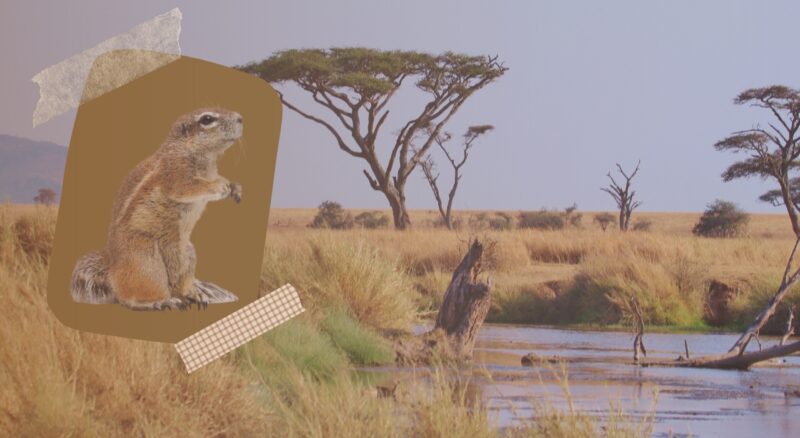
Roaming the open woodlands, grasslands, and rocky terrains of Africa, the Xerus, more commonly known as the African ground squirrel, showcases a remarkable adaptation to terrestrial life. These nimble rodents play an indispensable role in their ecosystem by aerating the soil through their burrowing activities, facilitating plant growth and contributing to the overall health of their biome.
Living in colonies that can comprise up to 20 individuals, Xerus display a unique social structure. Sunbathing and indulging in mutual grooming are common scenes, emphasizing their strong social bonds. Their long, bushy tails serve not only as a distinctive feature but also as sunshades to provide respite from the scorching African sun.
With their alert posture and keen vigilance, Xerus have become symbols of watchfulness in African folklore. Despite facing certain challenges like habitat loss and being deemed as pests due to their burrowing tendencies, the current status of the Xerus does not place them in the endangered category. Conservation efforts are focused on preserving their natural habitats and implementing strategies to manage any human-wildlife conflicts.
Xantus’s Murrelet

Along the Pacific Ocean’s shores, particularly near California and Mexico, the enigmatic Xantus’s Murrelet gracefully navigates its existence. Embracing a nocturnal lifestyle, these small seabirds skillfully conceal their nests during the veil of darkness, thus evading potential predators. They play a pivotal role in the delicate marine food web, connecting various trophic levels within their oceanic realm.
What sets the Xantus’s Murrelet apart is its exceptional mastery in both flying and swimming, showcasing its unparalleled hunting prowess. It effortlessly catches small fish and invertebrates, both above and beneath the water’s surface, leaving spectators awestruck by its sheer agility.
In a nod to history, these elegant seabirds bear the name of John Xantus de Vesey, a renowned Hungarian zoologist whose work left a lasting impact on the field. Sadly, the Xantus’s Murrelet currently grapples with the perilous status of being endangered. The threats it faces, such as oil spills, light pollution, and predation from invasive species, highlight the urgent need for comprehensive conservation efforts to safeguard its future existence.
Xantis
In the lofty expanse of the Himalayas resides a majestic creature known as the Xantis, more commonly recognized as the Tibetan Yak. These formidable beasts, adorned with shaggy coats, have perfectly adapted to thrive in the cold, high-altitude environments they call home. Within their ecosystem, they play a pivotal role as grazers, meticulously feeding on grasses and other vegetation, while also serving as a vital prey species for majestic predators like the elusive snow leopards.
The Xantis boasts several distinct features, including its impressive, twisted horns and its voluminous shaggy hair, a testament to its fortitude against extreme cold. This exceptional adaptation enables it to navigate the harsh winters of the Himalayas with unwavering strength.
Embracing their significance in the cultural fabric of the Himalayan people, Xantis have become indispensable to their livelihoods. Providing a source of sustenance with their milk and meat, as well as wool for various purposes, these extraordinary animals have earned their place as integral components of human life in the region. Furthermore, their abilities as pack animals have been harnessed, aiding in the transportation of goods and commodities.
Despite their current status as non-endangered, the Xantis face potential threats from the adverse effects of climate change and habitat loss. In light of this, conservation efforts are vital to ensure the preservation of these magnificent creatures for generations to come.
Xeme

In the realm of the Arctic and Antarctic regions, the Xeme reigns as a small bird of remarkable wanderlust, also recognized as the Arctic Tern. Embarking on extraordinary migratory voyages year after year, these avian marvels journey from their Arctic breeding grounds to the distant reaches of the Antarctic and back again. Within their ecosystem, they fulfill an essential role, delicately balancing the ecological harmony by feeding on fish and invertebrates, while simultaneously becoming a crucial food source for a diverse array of predators.
A captivating sight to behold, the Xeme exhibits a striking allure with its long, graceful wings and distinct forked tail—a true exemplar of elegance in flight. Fiercely protective of their nests, these birds display unwavering courage in the face of much larger adversaries, accentuating their tenacity in safeguarding their young.
Culturally, the Xeme symbolizes a metaphor of endurance and determination through their epic long-distance migrations. The admiration garnered by their adventurous spirit extends beyond the confines of the animal kingdom and into the hearts of those who witness their extraordinary journeys.
Regrettably, the Xeme currently faces vulnerability, confronting a range of challenges stemming from climate change and habitat loss. As stewards of this fragile ecosystem, conservation efforts become paramount to preserve the splendor of these Arctic Terns for posterity.
Xoloitzcuintli
In the vibrant tapestry of Mexican history and culture, the Xoloitzcuintli, or the Mexican Hairless Dog, occupies a place of sacred significance. Hailing from the lands of Mexico, these unique canines showcase an almost hairless physique, though some varieties boast a coat. Honored and revered by ancient civilizations like the Aztecs, Toltecs, and Maya, they were believed to possess a mystical connection to the spiritual world.
Beyond their distinctive hairlessness, Xoloitzcuintlis have forged a reputation for their composed demeanor, earning praise as attentive and loyal companions. This characteristic loyalty has endeared them to the hearts of many, forming a deep bond between the breed and their human counterparts.
Endowed with such a rich cultural heritage, Xoloitzcuintlis played a significant role in guiding the souls of the departed on their journey to the underworld in ancient belief systems. Even today, they continue to be cherished as beloved pets, symbolizing a profound connection between contemporary Mexico and its ancestral roots.
Xalda Sheep

Originating from the picturesque region of Asturias in Spain, the Xalda Sheep represents a distinctive breed of domestic sheep. Blessed with long, coarse wool and an innate ability to endure the harsh conditions of the Asturian mountains, these sheep have earned a reputation for their adaptability.
What sets the Xalda Sheep apart is their striking black or brown wool and their robust constitution, making them stand out among their woolly peers. Moreover, they exhibit an extraordinary resistance to diseases that often afflict other sheep breeds, making them prized for their hardiness.
In the tapestry of Asturian heritage and rural economy, the Xalda Sheep assumes a crucial role. Providing valuable resources in the form of wool, meat, and milk, they have woven themselves into the lives of the people. Remarkably, their existence was once perilously threatened, but concerted conservation efforts have been instrumental in bolstering their population.
Xantic Sargo

Inhabiting the vast expanse of the eastern Pacific Ocean, the Xantic Sargo stands as an esteemed species of sea bream. Thriving amidst rocky reefs, these fish engage in a delicate dance within their ecosystems, acting both as predators and prey, feeding on an array of invertebrates and small fish.
The Xantic Sargo stands out with its resplendent silver-gray coloration, embellished by the distinctive dark patches gracing their dorsal fins. Sporting strong, robust bodies, they possess an exceptional ability to brave a wide range of water conditions, demonstrating their adaptability.
Culturally, the Xantic Sargo enjoys popularity among recreational anglers, their formidable size and tenacious spirit making them prized catches. At present, they do not reside in the realm of threatened species, yet they face potential challenges arising from overfishing and habitat loss, warranting cautious conservation efforts.
Xavier’s Greenbul
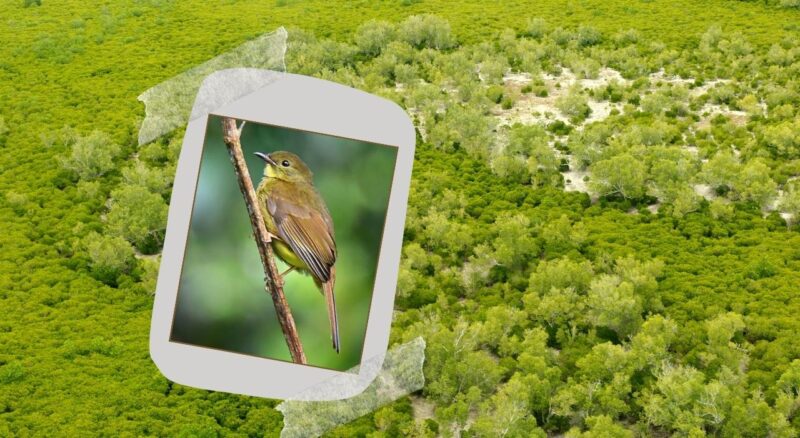
Within the lush forests of Mozambique resides Xavier’s Greenbul, a species of bird belonging to the Bulbul family. These delightful birds play an indispensable role as insectivores, actively contributing to insect population control within their ecosystem.
Xavier’s Greenbuls dazzle with their greenish-yellow plumage, and their enchanting melodies grace the air, rendering their presence even more captivating. Their ever-active behavior, as they dart and flit amidst the undergrowth in search of sustenance, showcases their perpetual quest for nourishment.
While not overtly prominent in human cultural circles, Xavier’s Greenbuls holds vital importance in the grand tapestry of biodiversity within their region. Although not currently listed as threatened, their habitats face potential challenges due to deforestation, warranting prudent conservation measures to safeguard their harmonious existence.
Xingu River Ray

Gracefully navigating the waters of the Xingu River in Brazil, the Xingu River Ray stands as an intriguing species of freshwater stingray. Boasting distinctive disc-shaped bodies and equipped with venomous tail spines, these rays command respect and admiration.
The Xingu River Ray possesses a unique and cunning ability to burrow itself within the sandy riverbed, patiently awaiting their unsuspecting prey. Their striking coloration adds yet another layer of fascination, as it seamlessly blends with the riverbed, rendering them nearly invisible to the naked eye.
Embedded within the local folklore, Xingu River Rays symbolize the vibrant biodiversity of the river they call home. Unfortunately, their very existence is at risk, as they currently bear the weight of an endangered status. Menacing threats, such as dam construction and habitat loss, underscore the urgency of implementing comprehensive conservation efforts to preserve their wondrous presence.
Xantus’ Swimming Crab
In the eastern Pacific Ocean, the Xantus’ Swimming Crab captures attention as an extraordinary species of crab that sets itself apart with its remarkable swimming abilities. Unconstrained by the usual limitations of most crabs, these agile creatures glide through the ocean with ease.
The distinguishing feature of Xantus’ Swimming Crabs lies in their flattened back legs, ingeniously transformed into paddles to propel them through the water. Resplendent in bright red coloration, they radiate a captivating aura, while their spirited nature shines through when faced with threats.
While not in the forefront of human cultural admiration, Xantus’ Swimming Crabs play a crucial role within the intricate web of regional biodiversity. At present, they do not face immediate threats as they remain unclassified as endangered. However, like many marine species, pollution and habitat loss remain potential challenges that call for vigilance in protecting their marine habitats
Animals that Phonetically Sound Like They Start with “X”
Well, we’ve quickly exhausted our list of animals with common names starting with ‘X’. But fear not, we’re not ready to call it quits just yet. In the spirit of creativity (and a bit of cheekiness), we’ve decided to expand our horizons. Let’s explore some animals that, while they may not technically start with ‘X’, certainly sound like they do. It’s all about the phonetics, after all!
Echidna
Native to Australia and New Guinea, the Echidna, also known as the spiny anteater, stands as a unique creature in the animal kingdom. Solitary by nature, these remarkable mammals possess the rare distinction of laying eggs—a trait shared by only a few other mammals. Adorned with a spiky appearance and equipped with long, sticky tongues, Echidnas savor a diet of ants and termites, performing a valuable role in their ecosystem by keeping insect populations in check and aerating the soil through their diligent digging activities.
Inhabiting a realm of peculiarities, Echidnas boast a lower body temperature compared to most mammals, allowing them to adapt to a variety of habitats. Their versatility extends to their robust claws, which serve both as a formidable defense and a tool for rolling into a protective ball when faced with threats, effectively employing their spines as a deterrent against predators.
Beyond their biological uniqueness, Echidnas have made a significant cultural impact, particularly in Australia. Revered in Aboriginal folklore and celebrated as a symbol in contemporary Australian media, these intriguing creatures continue to capture the imagination of many.
Accipiter

Within the genus of birds of prey known as Accipiter, one discovers the formidable goshawks and sparrowhawks. Widely distributed across the globe, these avian hunters wield razor-sharp vision and powerful talons that secure their position at the top of the avian food chain. As devoted controllers of small bird and mammal populations, Accipiters play a pivotal role in maintaining ecological balance within their habitats.
What sets Accipiters apart is their remarkable hunting style, earning them the moniker of “bird hawks” for their expertise in mid-air avian pursuit. With short, rounded wings and long tails, these masters of maneuverability deftly navigate the trees at impressive speeds.
With a historical impact that spans millennia, Accipiters holds a special place in falconry, where their prowess has been harnessed for hunting purposes. Additionally, they are celebrated in various forms of art and mythology as symbols of power and precision. Though some Accipiter species face threats from habitat loss and pesticide exposure, others thrive in their habitats, exemplifying the diverse array of life within this genus.
Axolotl
The Axolotl, also known as the Mexican walking fish, is a type of salamander that never undergoes a complete metamorphosis, meaning it retains its juvenile aquatic form throughout its life. Native to the Xochimilco lake complex near Mexico City, Axolotls are a critical part of their ecosystem, feeding on small fish, worms, and insects.
Axolotls are famous for their remarkable regenerative abilities. They can regenerate not only limbs but also their heart, spinal cord, and parts of their brain. This unique trait has made them a favorite subject of scientific research.
Axolotls have a significant cultural impact, especially in Mexico, where they’re considered a cultural and historical symbol. Unfortunately, they’re critically endangered in the wild due to habitat loss and pollution. Conservation efforts are ongoing, including captive breeding programs and habitat restoration projects, to save these fascinating creatures from extinction.
Exocoetidae
Within the realm of warm tropical and subtropical waters in all oceans, the Exocoetidae family, better known as flying fish, embarks on an extraordinary journey. Renowned for their remarkable ability to leap out of the water and glide through the air, these marine fish deploy this fascinating behavior as a means to evade underwater predators, fulfilling a crucial role within the marine food web.
At the heart of their uniqueness lies the enlarged pectoral fins, acting as veritable wings that enable these fish to glide effortlessly through the air. Their airborne acrobatics are nothing short of astounding as they soar impressive distances.
Beyond their aquatic prowess, flying fish leave an indelible mark in maritime folklore and find themselves a popular motif in art and literature. Additionally, they hold cultural importance as a significant food source in certain societies. While not presently under the threat of endangerment, the Exocoetidae family must remain vigilant against potential challenges, including overfishing and the ramifications of climate change. Embracing sustainable fishing practices and committed conservation efforts are paramount to ensure the continuity of these marvelous gliders of the sea.
Animals with Scientific Names Starting with “X”
Just when you thought we’d exhausted our ‘X’ options, we’ve found another way to keep this alphabetical adventure going. Inspired by the vast and varied world of scientific nomenclature, we’ve decided to delve into the realm of animals with scientific names starting with ‘X’. So, put on your lab coats and adjust your microscope, because we’re about to get scientific!
Xenopus
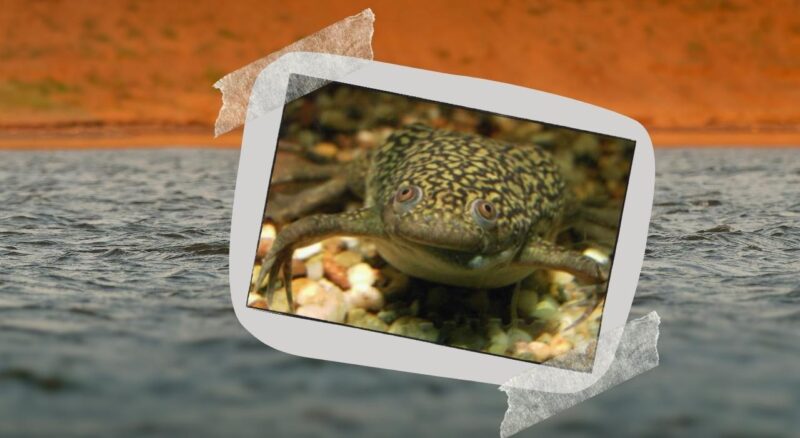
Xenopus is a genus of African frogs, commonly known as the African clawed frogs. These aquatic frogs inhabit a wide range of habitats in sub-Saharan Africa, from large lakes to small ponds. They play a crucial role in their ecosystems by controlling insect populations and serving as prey for a variety of birds, fish, and mammals.
Xenopus frogs lead fully aquatic lifestyles, while their distinctive clawed hind feet serve as effective tools to tear apart their food. Additionally, a remarkable lateral line system, reminiscent of fish, empowers them to detect movements and vibrations in the water, reinforcing their survival strategies.
Beyond the bounds of their natural habitat, Xenopus holds a vital position in both cultural and scientific domains. In African traditional medicine, their utility finds recognition, while within biological research, they stand as a favored model organism due to their sizable and readily manipulatable eggs. The ever-evolving narrative of Xenopus encompasses challenges of conservation, with certain species facing threats from habitat loss and pollution, while others emerge as invasive species in various regions—a testament to the complexities of amphibian preservation.
Xiphias gladius
Gracefully navigating the vast expanses of the Atlantic, Pacific, and Indian Oceans, Xiphias gladius, colloquially known as the swordfish, assumes its role as a commanding migratory fish—a top predator integral to the balance of marine ecosystems.
Setting itself apart, the swordfish brandishes a long, flat bill resembling a “sword,” wielded with mastery to slash at schools of fish, rendering prey dazed or wounded. In the realm of aquatic velocity, these formidable creatures boast impressive speeds, reaching up to 60 mph, a testament to their prowess.
The influence of the swordfish transcends beyond marine life, leaving an indelible mark on both culture and commerce. Popular targets for sport fishing due to their size and speed, they also emerge as a significant food source commercially. However, the challenge lies in striking a delicate balance, as overfishing and bycatch have inflicted population declines, urging the adoption of sustainable fishing practices and effective management to safeguard these majestic beings.
Xenops

Xenops is a genus of birds in the family Furnariidae, commonly known as the ovenbirds. These small, insect-eating birds are found in forests and woodlands throughout Central and South America. They play a crucial role in their ecosystems by controlling insect populations.
An enchanting peculiarity emerges as Xenops birds traverse tree trunks and branches in a manner reminiscent of woodpeckers, meticulously seeking out hidden insects to fuel their sustenance. Distinctive wedge-shaped bills prove instrumental in prying off the bark and unveiling concealed prey.
While their cultural prominence may not be as pronounced, Xenops’ importance in fostering the biodiversity of the Neotropical region remains unwavering. Sustaining relatively stable populations, the conservation spotlight is cast on preserving their forest habitats from the encroaching threat of deforestation, safeguarding the enigmatic ovenbirds’ rightful place in the tapestry of life.
Xylophones
Xylophanes is a genus of moths in the family Sphingidae, also known as the hawk moths. These moths are found in many parts of the world, including North and South America, Africa, and Asia. As pollinators and prey for other animals, they play a crucial role in their ecosystems.
Xylophanes moths are known for their fast, powerful flight and their ability to hover in place, much like a hummingbird. Many species have bright, colorful patterns on their wings and bodies.
While moths might not have the same cultural cachet as butterflies, they are a vital part of our global biodiversity. Some xylophone species are threatened by habitat loss due to deforestation, highlighting the need for the conservation of these fascinating creatures.
Xantus’s Hummingbird (Basilinna xantusii)
Dancing on the stage of Baja California, the Xantus’s Hummingbird, a captivating species of hummingbird, graces a diverse array of habitats, from arid desert scrublands to flourishing gardens. As vigilant pollinators, they play a pivotal role in propagating the plants they so delicately feed on.
Xantus’s Hummingbirds are known for their vibrant plumage, with males sporting a black face, green crown and back, and cinnamon-colored underparts. Like all hummingbirds, they’re capable of hovering in place and can even fly backward, feats made possible by their rapid wing beats.
Xantus’s Hummingbirds are named after John Xantus de Vesey, a Hungarian zoologist who worked in the U.S. during the 19th century.
Xenopeltis
Xenopeltis is a genus of snakes known as sunbeam snakes, named for their iridescent, sunbeam-like scales. These snakes are found in Southeast Asia and are known for their burrowing lifestyle. They play a role in their ecosystems as predators of small animals like rodents and lizards.
Sunbeam snakes are unique for their highly iridescent scales, which shimmer with rainbow colors in sunlight. They’re also known for their burrowing habits, spending much of their time hidden in the soil.
While not particularly prominent in human culture, sunbeam snakes are often collected for the pet trade due to their beautiful scales. However, they’re not well-suited to captivity and can be negatively impacted by habitat loss, highlighting the need for responsible wildlife trade and habitat conservation.
Xerobates
In the arid deserts of North America, the genus Xerobates introduces us to the desert tortoises, enduring creatures of stout constitution capable of withstanding extreme temperatures. Carrying roles as seed dispersers and providers of shelter through their burrows, they carve a meaningful presence in their ecosystems.
Standing as a testament to resilience, the desert tortoises sport domed shells and robust, elephantine legs. Embracing longevity, some individuals thrive in the wild for up to 80 years.
Within Native American cultures, the desert tortoises find themselves entwined with themes of longevity and perseverance, embodying cherished symbols. However, the threat of habitat loss, predation, and disease leaves them in a vulnerable state. Protected under U.S. law, these remarkable reptiles inspire the importance of conservation efforts to ensure their endurance.
Xenarthra
The Xenarthra superorder unveils an enchanting array of mammals, encompassing iconic creatures such as armadillos, anteaters, and sloths. Primarily found in Central and South America, these diverse animals contribute various roles within their ecosystems, spanning from insect control to seed dispersal.
Exhibiting peculiar vertebral joints, endowed with extra articulations, Xenarthrans lead the way in the realm of “strange joints.” Their slow metabolism and lower body temperature in comparison to other mammals add to the mosaic of their uniqueness.
Through the tapestry of Central and South American cultures, these fascinating mammals weave their way, assuming roles ranging from symbols of relaxation and tranquility, as embodied by sloths, to those representing protection and boundaries, embodied by armadillos. As various Xenarthran species encounter threats from habitat loss and hunting, the call for conservation efforts emerges, safeguarding the rich diversity they represent.
Xysticus
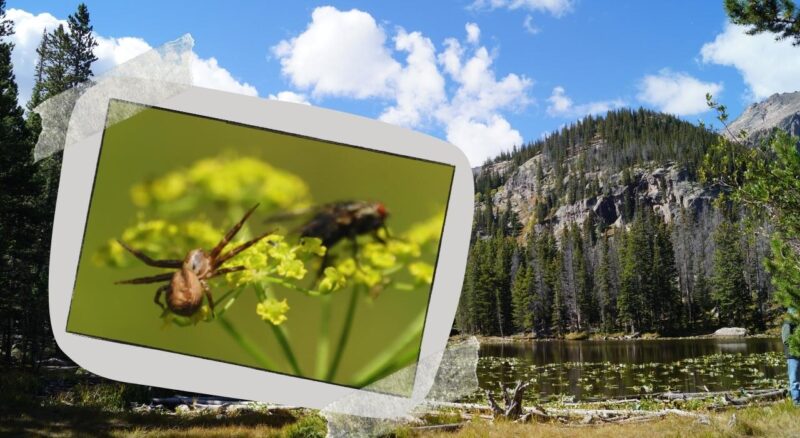
The genus Xysticus introduces us to the intriguing world of ground spiders, scattered across various corners of the globe, from North America to Europe. Embodying a vital role as insect predators, they stand as vigilant guardians, maintaining ecological balance by controlling insect populations.
Exhibiting a crab-like appearance, Xysticus spiders master the art of concealed ambush, skillfully concealing themselves in the soil or beneath rocks, patiently awaiting unsuspecting prey. Their unique hunting strategy sees them seize their quarry with their front legs while maintaining a steadfast stance with their hind legs planted on the ground.
While arachnids often encounter negative portrayals, their significance in the grand tapestry of global biodiversity cannot be understated. The conservation of these fascinating ground spiders becomes paramount, as certain Xysticus species encounter the peril of habitat loss stemming from human activities.
Xantusia
Xantusia is a genus of lizards, also known as night lizards, native to the southwestern United States and Baja California in Mexico. These lizards inhabit a variety of habitats, from deserts to forests, and play a role in their ecosystems as both predator and prey.
Eclipsed in the cloak of the night, night lizards boast secretive, mostly nocturnal habits, shrouded in a veil of mystery. Underscoring their tenacity, some individuals embrace lifespans extending up to 30 years, marking them as enduring souls.
Xiphophorus
In the vibrant waters of North and Central America, the Xiphophorus genus introduces us to the world of swordtails and platies, small and colorful fish adorning freshwater habitats, playing pivotal roles in the aquatic food web.
Embracing a unique splendor, these fish captivate with their vibrant hues, while the males’ elongated lower tail fin gracefully resembles a sword. Their live-bearing reproduction showcases similarities with guppies and mollies, a fascinating facet of their existence.
Amidst aquarium enthusiasts, swordtails and platies emerge as cherished favorites, their bright colors and low-maintenance care capturing hearts. Moreover, they hold their place in the realm of scientific research, contributing to the study of genetics and evolution.
Xerus Inauris
Roaming the arid lands of southern Africa, Xerus Inauris, also known as the Cape Ground Squirrel, thrives as a dynamic ground squirrel species. Delving into the tapestry of their ecosystem, they stand as both predators and prey, foraging on roots, seeds, and insects, while also providing sustenance to larger predators.
Sporting long, bushy tails adeptly utilized as sunshades, Cape Ground Squirrels possess remarkable social behavior, dwelling in groups of up to 20 individuals, embracing the strength of community.
Callophrys xami (Xami Hairstreak)

Callophrys xami, commonly known as the Xami Hairstreak, is a small butterfly found in the southwestern United States and Mexico. These butterflies inhabit a variety of habitats, including deserts and scrublands, and play a role in their ecosystems as pollinators.
Xami Hairstreaks are unique for their small size and the distinctive patterns on the undersides of their wings, which provide camouflage against predators.
Corydoras xinguensis (Xingu Corydoras)
In the winding embrace of Brazil’s Xingu River, the Corydoras xinguensis, commonly known as the Xingu Corydoras, unveils itself, a small yet robust catfish species. Embracing the bottom-dwelling life, they thrive on a diet of detritus and small invertebrates, entwining themselves within the aquatic food web.
Exhibiting armored bodies and barbels near their mouths for efficient food exploration, Xingu Corydoras remain remarkable beings within the aquatic realm.
Serving as adored denizens of the aquarium trade, they enchant enthusiasts with their peaceful disposition and unique appearance.
Phyllastrephus xavieri (Xavier’s Greenbul)
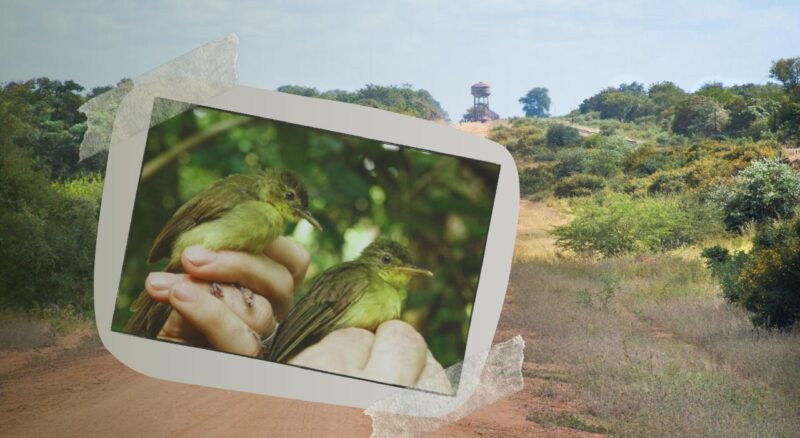
Phyllastrephus xavieri, commonly known as Xavier’s Greenbul, is a species of bird in the bulbul family, native to the forests of Mozambique. These birds play a crucial role in their ecosystems as insectivores, helping to control insect populations.
Xavier’s Greenbuls are unique for their greenish-yellow plumage and their melodious songs. They’re also known for their active behavior, often seen flitting about in the undergrowth in search of food.
Potamotrygon leopoldi (Xingu River Ray)
Within Brazil’s Xingu River, Potamotrygon leopoldi, known as the Xingu River Ray, graces the sandy bottom with its distinctive, disc-shaped body and venomous tail spines.
Adapting a remarkable hunting strategy, these rays lie concealed beneath the riverbed, camouflaged against their surroundings. Embracing cultural significance, Xingu River Rays feature prominently in local folklore as symbols of the river’s biodiversity.s.
Hepatus epheliticus (Xantus’ Swimming Crab)
Hepatus epheliticus, commonly known as the Xantus’ Swimming Crab, is a species of crab found in the eastern Pacific Ocean. These crabs are known for their ability to swim, a trait that sets them apart from most other crabs.
Employing their flattened back legs as paddles, these bright red crabs navigate their aquatic world with grace, exemplifying their adaptability.
Podoces biddulphi (Xinjiang Ground Jay)
In the arid deserts of northwestern China, Podoces biddulphi, the Xinjiang Ground Jay, thrives as a resilient bird species.
Equipped with strong legs and long, curved beaks, they proficiently navigate the sandy terrain, foraging for sustenance and captivating with their distinctive calls.
Crocidura xantippe (Xanthippe’s Shrew)
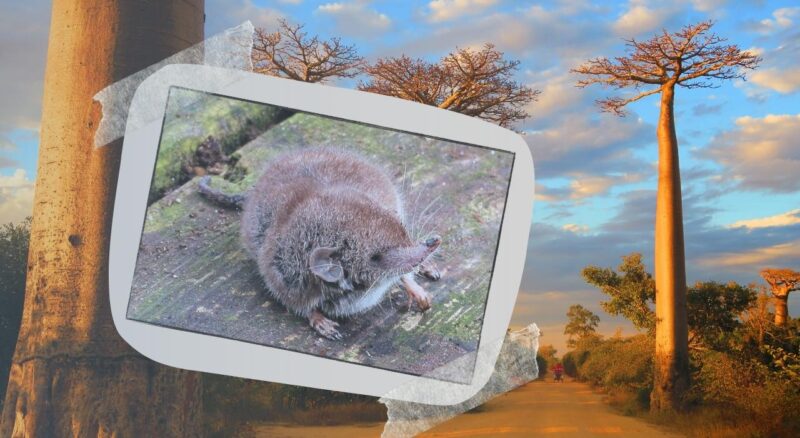
In the rich landscapes of Madagascar, Crocidura xantippe, or Xanthippe’s Shrew, forges its existence as a small but tenacious insectivorous mammal.
Armed with its long, pointed snout, this shrew scours the leaf litter for its insect prey, sustained by a high metabolic rate.
Xestochilus nebulosus

In the lush forests of the Philippines, Xestochilus nebulosus thrives as a species of beetle in the Cerambycidae family, distinguished by its long antennae and wood-boring larvae.
With elongated bodies and the ability to fly, these beetles contribute to the intricate web of forest ecosystems, while their larvae, which bore into wood, play a vital role in nutrient cycling.
Limulus polyphemus (Xiphosura)
Along the Atlantic coast of North America and the Gulf of Mexico, Limulus polyphemus, the Atlantic Horseshoe Crab, makes its presence known with its distinctive horseshoe-shaped carapace and long, pointed tail.
Exceptional for their blue blood, containing a substance vital for medical testing, these ancient arthropods trace their lineage back hundreds of millions of years, standing as living relics of our planet’s past.
In terms of cultural impact, Atlantic Horseshoe Crabs are often featured in educational programs and are seen as symbols of the ocean’s biodiversity. They are currently considered vulnerable due to threats like overharvesting and habitat loss, highlighting the need for conservation efforts.
Xestus sabretooth blenny
Xestus sabretooth blenny is a species of combtooth blenny found in the Pacific Ocean. These small fish are known for their elongated bodies and their comb-like teeth.
With fang-like teeth and an extraordinary ability to mimic other fish species, these blennies are skilled in both defense and offense, defending their territories with vigor.
Xolmis irupero (Xolmis)
In the diverse landscapes of South America, Xolmis irupero, or the White Monjita, graces the scene as a member of the Tyrannidae family. These birds are easily recognized by their striking white plumage and insectivorous diet.
Distinguished by their bold and contrasting plumage, they boldly perch in open areas, displaying their agile flight to capture insects mid-air.
Craugastor xucanebi (Xucaneb Robber Frog)
Amid the captivating landscapes of Guatemala, the Xucaneb Robber Frog, also known as Craugastor xucanebi, thrives as a native frog species. These cryptically colored frogs exhibit exceptional survival skills across various habitats.
Boasting muscular legs that allow for long jumps, these nocturnal frogs engage in stealthy hunting, emerging under the cover of night to pursue their prey.
Papilio xuthus (Xuthus Swallowtail)
In the enchanting landscapes of East Asia, Papilio xuthus, or the Xuthus Swallowtail, reigns as a native butterfly species. With their large size and striking yellow-and-black wings, these butterflies are a sight to behold.
Distinguished by tail-like extensions on their hindwings, Xuthus Swallowtails exhibit exceptional grace and have the ability to fly long distances. Their caterpillars, cleverly resembling bird droppings, employ a form of camouflage for protection.
Beyond their ecological significance, Xuthus Swallowtails hold a special place in art and literature due to their beauty.
Bos grunniens (Xantis Yak)
Bos grunniens, commonly known as the Tibetan Yak or Xantis Yak, is a species of yak native to the Himalayas. These large, shaggy animals are well-adapted to the cold, high-altitude environments they inhabit. They play a crucial role in their ecosystem, grazing on grasses and other vegetation and serving as prey for predators like snow leopards.
Beyond their ecological role in grazing on vegetation, Xantis Yaks serve as a vital part of the Himalayan people’s lives. Providing milk, meat, and wool, they are also used as pack animals, bolstering local livelihoods.
Capra hircus (Xuhai Goat)

Capra hircus, commonly known as the Domestic Goat or Xuhai Goat, is a subspecies of goat bred for meat production in China. These goats are known for their adaptability and their ability to survive in a variety of environments.
Large in size and productive in meat yield, these goats play a significant role in rural economies, providing sustenance and resources. As valuable livestock, they continue to contribute to local communities.
Xenopeltis unicolor (Xenopeltis Unicolor)
Xenopeltis unicolor, commonly known as the Sunbeam Snake, is a species of snake native to Southeast Asia. These snakes are known for their iridescent scales, which shimmer with rainbow colors in the sunlight.
Sunbeam Snakes are unique for their smooth, shiny scales and their burrowing habits. They’re also known for their docile nature, often hiding rather than confronting potential threats.
Mythical Creatures that Start with “X”
As we reach the end of our ‘X’ animal exploration, we thought we’d have a bit of fun and venture into the realm of mythology. After all, the animal kingdom isn’t just about the creatures we can see and touch; it’s also about those that capture our imagination. So, let’s take a whimsical detour and meet some mythical creatures that start with ‘X’.
Xiezhi
In Chinese mythology, the Xiezhi, also known as Haetae, is a mythical creature with a lion-like appearance, sporting a single horn on its head. This mystical beast holds the extraordinary power to discern right from wrong, making it a symbol of justice and fairness.
The cultural impact of the Xiezhi is profound, especially in China, where it represents law and order. Traditionally, statues of the Xiezhi were placed in law courts and government offices to invoke its wisdom. Even today, it remains a popular motif in Chinese art and literature, reminding people of the importance of upholding justice
Xana
Hailing from Asturian mythology, the Xana is a captivating nymph believed to inhabit rivers and springs. These mythical beings are renowned for their enchanting singing and are closely associated with nature and femininity.
In Asturias, a region in northern Spain, the Xana has left an enduring cultural impact. Woven into local folklore, the Xana symbolizes the beauty and wonder of the natural world. This alluring creature continues to grace festivals, literary works, and art, keeping its presence alive in the hearts of Asturians.
Xolotl
From Aztec mythology emerges Xolotl, a creature resembling a dog-like monster, linked to the realms of lightning and death. This enigmatic being possesses the ability to traverse between the world of the living and the dead. Additionally, Xolotl is associated with the evening star, Venus.
The cultural impact of Xolotl is notable, especially in Mexico, where he represents change and transformation. Despite his fearsome image and associations with death, Xolotl also serves as a guide and protector, guiding departed souls on their journey to the underworld. His legacy endures as a symbol of transition and protection in Mexican folklore and beliefs.
Conclusion
And there you have it, folks! We’ve journeyed from the depths of the Amazon River with the X-ray Tetra to the open woodlands of Africa with the Xerus, dabbled in phonetics with the Echidna and Accipiter, delved into the scientific world with Xenopus and Xysticus, and even taken a whimsical detour into mythology with the Xiezhi and Xolotl.
Writing this article has been an X-traordinary adventure, and we hope reading it has been just as fun. The world of animals is as diverse as it is fascinating, and even a letter as uncommon as ‘X’ has its fair share of representation.
More than just an alphabetical exploration, this journey has been a celebration of our planet’s incredible biodiversity. From the smallest insects to the largest mammals, every creature plays a unique role in its ecosystem. And whether they’re a part of our physical world or exist only in myths and legends, these animals captivate our imaginations and enrich our understanding of life on Earth.
We hope you’ve learned something new from this exploration and that it’s sparked your curiosity to learn more about the wonderful world of animals. After all, every creature has a story to tell, whether its name starts with ‘X’ or any other letter of the alphabet. So, keep exploring, keep learning, and most importantly, keep appreciating the amazing animal kingdom we share this planet with.








